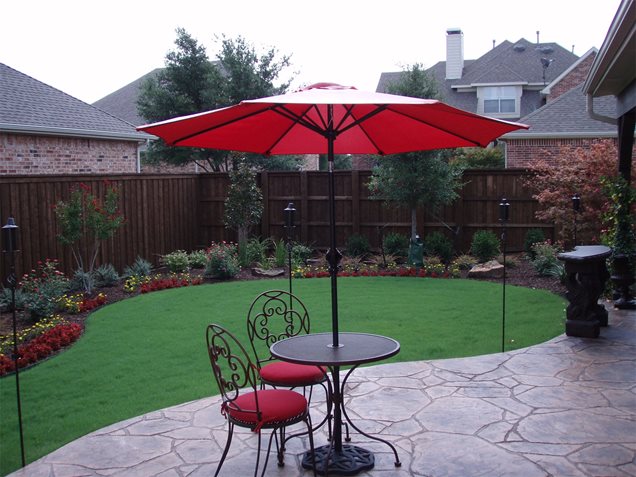We all enjoy the gorgeous fall weather here in Texas, but unfortunately its time is fleeting. Soon those cozy backyard fire pits and crisp late-year parties will be replaced by frigid air and some fairly harsh snows. But don’t allow your green thumb to rest just yet, as there is plenty of work for your landscape in winter! Your dream landscape may look less active as the cold sets in, but there is still a lot going on behind the scenes.
The experts at LandXscapes Lawn & Landscaping are here, primed and ready to walk you through the steps you should take to prep your landscape for the incoming icy chill. Don’t fret, it’s all fairly simple!
Remember, you’re not seeing a lot of growth, but plants are still very active in the cool months, gathering nutrients and preparing for an extended rest. Prep your landscape for winter with these steps:
- Rake it up. There are some arguments to be had about leaving fall leaves on the lawn, as they can make for a solid source of winter compost. However, thick, damp coats of leaves can suffocate and kill your grass. Don’t allow this to happen. The best winter lawn care is to mulch the leaves, allowing for a nice, nutritious compost while avoiding suffocation. Failing this, just rake the leaves up. Better to let your grass stay alive!
- Mulch it. We mentioned in a previous post that mulching in the fall can provide your garden with much needed moisture and nutrients. For winter lawn care, add a much thicker coat, as you want to create a thermal layer to protect your plants. Annuals have little chance of surviving winter, but with appropriate prep, the root of perennials can fare just fine. Thick layers of mulch should be spread around the base of trees, and in any gardens containing hardier plants that are likely to survive. Be sure not to cover all the way up to the base of trees, as this can encourage rot.
Winter Plant Protection: Helping Your Foliage
Many plants that thrive in our zone are perfectly capable of fending off winter weather. Take this opportunity to improve their chances:
- Prune back leaves, branches and stems that exhibit the signs of rot or disease. This will help your plants survive the winter, and make them healthier next year as well! Take care not to prune trees before a freeze, as you may kill the branch. For perennials, cut down to the soil base, leaving the root bulb intact.
- Dead plants, foliage and annual plant that aren't likely to survive the winter. These will do little more than clutter up your garden, and potentially create dead zones in your soil.


No comments:
Post a Comment